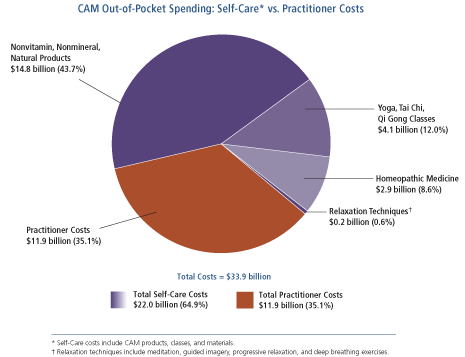Article
Americans Spending Billions on Nonconventional Medicine
Author(s):
Many Americans appear to be trying nontraditional medicine, if recently released research is any guide. More than one-third of adults have used some form of complementary and alternative medicine, according to the government's latest national health interview survey.
Newly released government research reveals that Americans spent $33.9 billion on complementary and alternative medicine (CAM) in 2007 and that more than one third of them (38%) used some form of CAM for health and wellness or to treat a disease or condition. CAM includes medical practices and products, such as herbal supplements, meditation, chiropractic, and acupuncture, which are not generally considered part of conventional medicine.

Data from the 2007 National Health Interview Survey also show that of the $33.9 billion spent on CAM out-of-pocket, an estimated $22 billion was spent on self-care costs, with the majority ($14.8 billion) going to the purchase of nonvitamin, nonmineral, natural products, such as fish oil, glucosamine, and echinacea. American adults also spent approximately $11.9 billion on an estimated 354 million visits to CAM practitioners, including acupuncturists, chiropractors, and massage therapists.
To put the figures in context, the $14.8 billion spent on nonvitamin, nonmineral, natural products is equivalent to approximately one third of total annual out-of-pocket spending on prescription drugs, according to the National Center for Complementary and Alternative Medicine (NCCAM); the $11.9 billion spent on visits to CAM practitioners represents one fourth of total out-of-pocket spending on physician visits.
"With so many Americans using and spending money on CAM therapies, it is extremely important to know whether the products and services are safe and effective," said NCCAM Director Josephine P. Briggs. "This underscores the importance of conducting rigorous research and providing evidence-based information on CAM so that health care providers and the public can make well-informed decisions."
For other articles in this issue, see:
Pharmacy Care Teams Get to the Heart of the Matter





